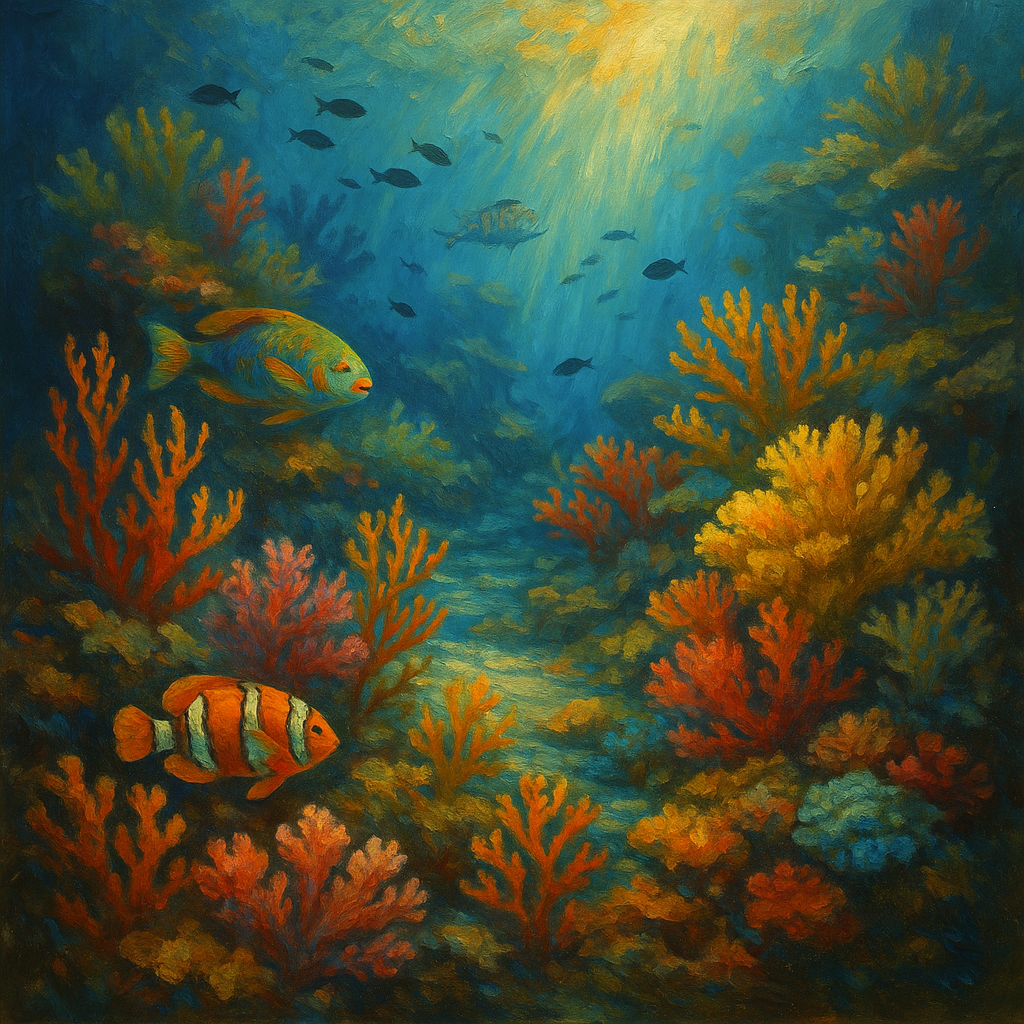Coral reefs, often referred to as the ‘rainforests of the sea’, are among the most diverse and vibrant ecosystems on the planet. Covering less than 1% of the ocean floor, they provide habitats for approximately 25% of all marine species. Coral reefs contribute to global biodiversity and support fisheries, tourism, and coastal protection. However, these vital ecosystems are facing unprecedented threats, leading to severe coral reef decline and subsequent impacts on marine biodiversity. This article explores the ecological significance of coral reefs, the current threats they face, and potential conservation strategies to ensure their survival.
Introduction to Coral Reefs and Their Significance
Ecological Importance of Coral Reefs
Coral reefs are more than just beautiful underwater structures; they are essential marine architectures that foster rich biodiversity. Composed primarily of coral polyps that secrete calcium carbonate, these organisms form the physical foundation of reef ecosystems. Coral reefs:
- Support Marine Life: They serve as critical habitats for fish, mollusks, sea turtles, and numerous invertebrates. For instance, the colorful parrotfish and the majestic clownfish depend on reefs for shelter and food sources.
- Foster Biodiversity: Coral reefs are some of the most biodiverse ecosystems on Earth, hosting thousands of species, many of which are yet to be discovered. This diversity plays a vital role in maintaining ecological balance and resilience.
- Economic Value: Many coastal communities rely on healthy coral reefs for their livelihoods through fishing and tourism industries. According to the Global Coral Reef Monitoring Network, coral reefs contribute approximately $375 billion annually through these economic activities.
- Protect Coastal Areas: By breaking waves and reducing erosion, coral reefs serve as natural barriers, protecting coastlines from storm surges and promoting habitat for plants and animals.
Threats Faced by Coral Kingdoms
Despite their ecological significance, coral reefs face numerous existential threats:
1. Climate Change
Climate change has emerged as the most significant threat to coral reefs. As global temperatures rise, oceans absorb much of this heat, leading to coral bleaching—a process where corals expel the algae (zooxanthellae) that provide them with nutrients and color. A study published in Nature Climate Change predicts that if global temperatures increase by just 2°C, 99% of coral reefs will be threatened with severe bleaching.
2. Ocean Acidification
Increased carbon dioxide emissions not only raise ocean temperatures but also lead to ocean acidification, diminishing the availability of carbonate ions necessary for coral calcification. Research indicates that as pH levels drop, reef-building corals struggle to maintain their calcium carbonate structures, leading to weakened reefs.
3. Pollution
Pollution from agricultural runoff, plastics, and untreated sewage introduces harmful chemicals and sediments into ocean waters, affecting coral health. Nutrient runoff leads to algal blooms, which can outcompete corals for space and light. Additionally, plastic debris threatens marine life through entanglement and ingestion.
4. Overfishing
Overfishing disrupts the ecological balance within coral reef ecosystems. Targeted removal of key species can have cascading effects, reducing biodiversity and the resilience of reefs. For example, the depletion of herbivorous fish, which graze on algae, can lead to algal overgrowth and coral suffocation.
5. Unsustainable Tourism
While tourism can provide funding for conservation, poorly managed tourism activities can have detrimental impacts on coral reefs. Physical damage from anchors, trampling by snorkelers, and the collection of corals for souvenirs can lead to reef degradation.
Conservation Efforts and Innovative Solutions
Recognizing the importance of coral reefs and the threats they face, various conservation strategies and innovative solutions have emerged:
1. Marine Protected Areas (MPAs)
Establishing MPAs is a fundamental strategy for conserving coral reefs. These designated regions limit human activities, allowing ecosystems to recover and thrive. A shining example is the Great Barrier Reef Marine Park in Australia, one of the world’s most extensive MPAs, where fishing and harmful activities are regulated, leading to substantial ecological recovery.
2. Coral Restoration Projects
Restorative initiatives are gaining momentum, where coral fragments are cultivated in nurseries before being transplanted into degraded areas. Projects like the Coral Triangle Initiative focus on replanting corals using more resilient strains to withstand changing ocean conditions. The Coral Restoration Foundation in Florida has successfully restored over 100,000 corals to degraded reefs, showcasing the power of targeted restoration techniques.
3. Community Involvement and Education
Engaging local communities in conservation efforts is critical. Programs that educate residents about the ecological importance of coral reefs can foster stewardship. For example, community-based management initiatives in the Philippines empower local fishermen to take charge of monitoring and protecting reefs, leading to healthier ecosystems and sustainable fisheries.
4. Innovative Technology
Technological advancements have paved the way for innovative solutions in coral conservation. Research utilizing drone technology for mapping reef health and monitoring changes provides real-time data to guide conservation efforts. Likewise, genetic engineering and selective breeding techniques aim to develop corals that can endure warmer waters and more acidic conditions.
5. Legislative Action
Policymaking plays a crucial role in coral conservation. Countries must implement and enforce environmental laws that limit carbon emissions, protect marine habitats, and regulate fishing practices. Global agreements like the Paris Agreement aim to combat climate change, signaling a collective response to the environmental crisis affecting coral reefs.
Success Stories of Coral Conservation
Examining successful conservation efforts can provide inspiration and solutions for further initiatives:
- Bonaire National Marine Park in the Caribbean has successfully revived its coral populations through strict regulations on fishing, diving, and anchoring, coupled with community involvement in monitoring health.
- The Coral Triangle is recognized as the world’s coral reef capital, where efforts to protect biodiversity have showcased effective local governance and community participation.
- Restoration Initiatives in Hawaii have illustrated successful coral farming techniques, where local communities and scientists collaborate to rehabilitate damaged reefs and educate visitors on sustaining marine habitats.
Conclusion: The Path Forward for Coral Kingdom Preservation
Coral reefs stand at a critical juncture, where proactive conservation strategies can either restore their vitality or witness their further decline. Addressing the multitude of threats posed by climate change, pollution, and unsustainable practices requires a concerted effort from environmentalists, policymakers, and communities worldwide. Through innovative solutions, managed conservation efforts, and heightened awareness, the coral kingdoms of our oceans can be preserved for future generations.
FAQ Section
What is coral bleaching?
Coral bleaching is a phenomenon where corals lose their vibrant colors due to the expulsion of the algae (zooxanthellae) that live in symbiosis with them, primarily triggered by stress factors such as elevated water temperatures.
How does pollution affect coral reefs?
Pollution hinders coral growth and health by introducing harmful nutrients, chemicals, and sediments into oceans. It can lead to algal blooms that compete with corals for resources, causing them to suffocate.
Can coral reefs recover from damage?
Yes, coral reefs can recover from damage over time with proper conservation and restoration strategies. This often involves reducing stressors and implementing targeted restoration projects to promote coral growth.
What role do local communities play in coral conservation?
Local communities can play a vital role in coral conservation by participating in monitoring efforts, engaging in sustainable fishing practices, and supporting regulations that protect coral ecosystems.
Why is it important to protect coral reefs?
Protecting coral reefs is crucial due to their immense biodiversity, their role in supporting fisheries and coastal economies, and their function in protecting coastlines from erosion and storm surges.
This analysis underscores the urgent need for coral kingdom preservation through collaborative efforts, education, and effective policy implementation, laying the groundwork for a more sustainable future for marine ecosystems.


